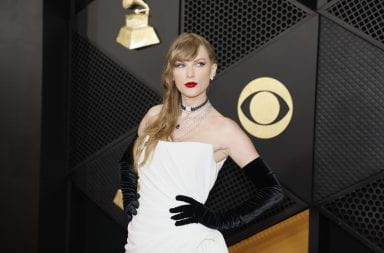
Music streaming services are becoming more popular than buying music physically or online. Credit: Lantern Photo File
With the music world transitioning from buying albums into paying a monthly subscription for an unlimited streaming service, a handful of applications are beginning to stand out. Apple Music, Spotify and Tidal provide millions of subscribers access to virtually any song, from hip-hop to classical.
According to Digital Music News, Spotify is the leading streaming service with 39 million paid subscribers. Apple Music has pulled 17 million paid subscribers. Tidal, which went online in 2015, is relatively new to the streaming scene, and holds 3 million paid subscribers.
As a person whose bank account has hit the negatives because of a monthly subscription to a music service, I understand the pains and turmoils of shelling out nearly $10 a month for music. Here is a breakdown of each streaming service.
Spotify Premium: $9.99/month or $4.99 with student discount
It’s not a secret as to why Spotify provides 30 million subscribers with music — it’s just good. It’s very user friendly and its playlists curated by experts in the music industry are well-made. Each playlist is broken down into either a genre or a mood allowing the user to select something like “Chill” and find soft acoustic music or chillwave EDM. Many genres and moods have popular playlists that are updated weekly so the top of the playlists offers the newest popular songs. Each genre or mood selected also breaks down, giving recommendations for similar artists and user-created playlists. In addition, Spotify creates personalized playlists based on the user’s previous song choice called “Discover Weekly.” Spotify wins by incorporating a social networking aspect by partnering with Facebook where users can share what music they are listening to and follow other users. Spotify’s major downfall, however, comes from being a little late on getting the newest music available for its users. Examples include being a week late in releasing “Views” by Drake and 12 days late on “Coloring Book” by Chance the Rapper.
Apple Music: $9.99/month or $4.99 with student discount
Since the rise of streaming music, Apple shifted from offering only singles and albums on iTunes to creating the streaming service Apple Music. While Apple Music, like Tidal, was created in 2015, it has wasted no time in gaining popularity and subscribers, gaining 15 million in its first year. It’s strongest feature is Spotify’s weakest. It gives users immediate access to new music as many albums and singles are exclusively released on it first. “Views” was available on Apple Music alone for the first week after its release. Apple Music also offers a similar structure to Spotify for selecting playlists, but the curated playlists aren’t as good. Aside from their weekly updated “A-List” playlists, which offer the top songs trending on Apple Music in each genre, their curated playlists are lacking. They’re too short and don’t have enough recognizable songs. There are a few gems within the curated playlists such as a nostalgic ‘90s mix, but the best strategy for Apple Music is to download your favorite songs to your library and iCloud.
TIDAL: $9.99 or $19.99 for TIDAL HiFi
TIDAL gained popularity in February 2016 with its exclusive release of “The Life of Pablo” by Kanye West. TIDAL is owned by a hodgepodge of artists and musicians –– notable names include Jay Z, Beyoncé and Kanye West. It offers exclusive content to users and the content isn’t limited to just singles and albums. In April 2016, Beyonce released her second visual album, “Lemonade,” on TIDAL, which was streamed 115 million times in the week it was released. TIDAL also heavily promotes its “high fidelity music streaming” on par with CD-sound-quality music on its website. This feature is only noticeable if you listen through a quality pair of headphones, such as Bose or Beats by Dre. The free iPhone earbuds won’t cut it.


